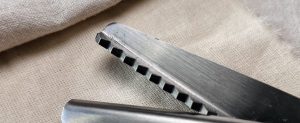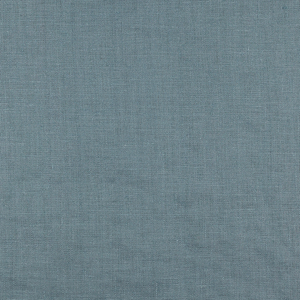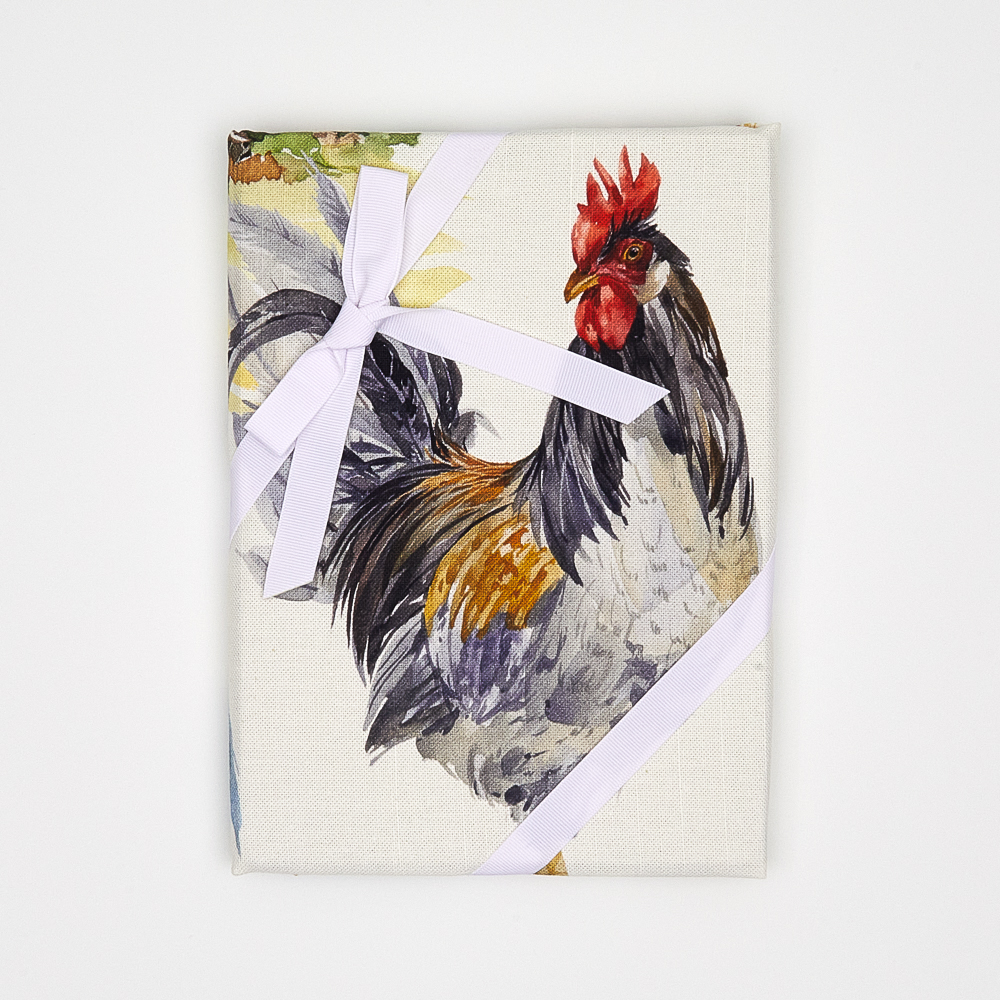How to Pre-Wash Fabric: A Simple Guide
We all know that exciting feeling of bringing home a beautiful new fabric, and all you want to do is dive in and start cutting. But, before we begin, there’s an important step we shouldn’t skip: pre-washing your fabric.
Sure, it may not be the most exciting task, but pre-washing our fabric can save a lot of time and heartache down the line.
I’ll admit, I have let my impatience get the better of me in the past and haven’t always prioritised this step. However, I’ve learned the hard way that skipping this step can be pretty devastating. Just imagine spending hours sewing a garment only to wash it and find that it has shrunk or warped beyond wearability. I am sure many of us have been there, whether with handmade or store-bought garments. Therefore, I have made it a habit to pre-wash any fabrics as soon as I bring them home. I usually even order a little extra—just in case!
What are the benefits of pre-washing?
I understand that washing large pieces of fabric, drying, and then ironing can take time and space—especially in a small apartment (trust me, I get it). However, the benefits of laundering fabric before cutting and sewing far outweigh the inconvenience.
- Pre-shrinking: Fabrics can shrink during their first wash as the fibres tighten from the agitation and heat. Pre-washing prevents this unwanted shrinkage from occurring after the garment is made, helping to ensure a more accurate fit.
- Colour fixation: Pre-washing removes excess dyes and helps to prevent colour bleeding. This is especially important when colour blocking light and dark fabrics together, as it minimises the risk of the dye transferring between fabrics.
- Adjusting texture and drape: Pre-washing can help the fabric to settle, whether that be through softening or a change in texture. In doing so, your will get a better idea of how the fabric will look and behave for your final project.
- Chemical removal: Fabric can carry residue from the manufacturing process. A quick pre-wash can reduce the presence of possible chemicals.
How to pre-wash fabric
1. Check the care instructions: If available, start by checking the care and wash instructions. This information is often found on the seller’s website or, if in-store, on the tag attached to the fabric bolt (take a photo for future reference).
2. Identify the fabric type: Again this information can be found on the sellers website, or if in store, on the fabric bolt. If this information isn’t available, a burn test may help identify the fibre type. There are many good resources online on how to do this.
3. Finish the raw edges: Take a look at the raw edges of the fabric. If they’re prone to fraying, consider finishing the edges with an overlock or zigzag stitch. This will prevent a tangled mess or the loss of fabric length. Alternatively, if the piece of fabric is small enough place it in a mesh laundry bag for added protection.
4. Sort by colour: Just like doing the laundry, separate the light and dark fabrics. Colours may bleed, and sorting will help prevent unwanted dye transfer.
Tip: If you’re worried about colour bleeding, a simple bleed test can give you peace of mind. Cut a small piece of fabric (about 5cm square) and soak it in water mixed with your preferred laundry detergent for roughly 30 minutes. If the water changes colour, the dyes have bled. Another method is to lay the washed fabric on a white paper towel to check for any dye transfer. This quick test can help with deciding if another wash is needed or if the fabric should be washed separately in the future.
5. Wash: Different types of fabric require specific care during pre-washing. Always check the care instructions if available.
Here are some general tips for handling various fabrics:
- Cotton and linen: Most cotton and linen fabrics can be machine washed in warm or hot water. However, more delicate or coloured types may benefit from a cold wash to prevent fading. Being natural fibres, I would recommend using a mild detergent.
- Silk and wool: Hand washing is the safest approach for these delicate fabrics. A delicate cold machine wash may also be acceptable, but it’s best to place the fabric in a mesh laundry bag. Use a detergent specifically designed for silk or wool.
- Synthetics (e.g. polyester, nylon, or acrylic): These fabrics are generally more durable, so a gentle or regular machine wash cycle with cold or warm water is suitable. However, if in doubt, opt for a gentler cycle with cooler water and a mild detergent.
- Rayon (e.g. viscose, modal, or lyocell): This semi-synthetic fibre can be delicate, so a cold water wash—either by hand or on a gentle machine cycle—is recommended.
- Delicate fabrics (e.g. lace, fine knits, or embellished pieces): Hand washing is the safest approach for these delicate fabrics. If using the machine, place the fabric in a mesh laundry bag to prevent snagging. Opt for a cold water wash and a delicate or gentle machine cycle, and use a mild detergent.
- Heavy fabrics (e.g. denim, or canvas): Use a gentle cold machine cycle or soak in cold water to prevent shrinkage and to help ensure the fabric maintains its structure. Also, rinse the fabric thoroughly to remove all detergent, as heavier fabrics may retain soap residue.
Remember to treat the fabric as you would the finished garment—avoid hand washing the fabric if you plan to machine wash the finished garment.
6. Remove the fabric as soon as possible: Take the fabric out of the water as soon as possible. Clothes can bunch up and twist in the machine or bucket, so give the fabric a shake to reduce creases (especially for linen). This will also cut down on ironing time, which is what we all want.
7. Dry: Always check the fabric’s care instructions for specific drying recommendations. Whenever possible, I would recommend air drying, especially for more delicate fabrics, laying them flat and keeping them out of direct sunlight. If machine drying is necessary, reserve it for more durable fabrics like synthetics, cotton, or linen.
8. Iron: After the fabric dries, press to remove any wrinkles, making it easier and more accurate to cut and sew. Sometime ironing the fabric
While pre-washing may seem like an annoying extra step, it’s totally worth it to protect your hard work and ensure your garments fit perfectly!








































16 Comments
Pingback:
How to Make a Cloth Doll | Easy Steps (2025)Pingback:
What Are the Best Fabrics for Scarves Minimizing Shipping Weight? - AceAccessorySarivo LLC
Thanks for the information. My question is how would you pre-wash fleece?
Emma Cartmel
Hello!
As a general rule for machine washing fleece, I’d recommend using cold water on a gentle or delicate cycle with a mild detergent. I’d also make sure not to overfill the washing machine so the fabric has room to move. If you need to use a dryer, go with the lowest heat setting to avoid shrinkage and prevent static buildup.
I recently made some sweaters from a cotton French terry fleece and chose to hand wash it in cold water with a mild detergent. It’s a gentler process that just gives me more control. To dry, I treated the fabric like a knitted garment by wrapping it in a towel to remove excess water and then laying it flat to dry.
Felicia Barfield
Thanks for the information. My question is how would you pre-wash fleece? I wash all my clothes on cool or cold setting and dry my clothes on low delicate setting. Would this method work for fleece?
Emma Cartmel
Hi Felicia,
Great question!
As a general rule for machine washing fleece, I’d recommend using cold water on a gentle or delicate cycle with a mild detergent. I’d also make sure not to overfill the washing machine so the fabric has room to move. If you need to use a dryer, go with the lowest heat setting to avoid shrinkage and prevent static buildup.
I recently made some sweaters from a cotton French terry fleece and chose to hand wash it in cold water with a mild detergent. It’s a gentler process that just gives me more control. To dry, I treated the fabric like a knitted garment by wrapping it in a towel to remove excess water and then laying it flat to dry.
Cathy Loomis
Hello! One trick I would highly recommend is when washing and drying large lengths of fabric, instead of just zigzagging each end, sew the ends together! This will help keep the fabric from twisting in the dryer and cuts down on ironing time.
Emma Cartmel
Hi Cathy,
Thanks for sharing this tip! I hadn’t thought about sewing the ends together!
Sheila Parkin
When purchasing linen from this site, the directions have been to wash in cold water and line dry. I never wash any fabrics with hot water, especially linens and fine cottons. My rule of thumb is to prewash the way I will wash it after construction. In doing so, problems with shrinkage or distortion have not occurred for me. Using a dryer for any fabric guarantees it will consistently lose fiber.
Emma Cartmel
Hi Sheila,
Thank you for your comment! It’s true—pre-washing fabric the same way you’ll care for the finished garment is key to avoiding surprises. I also agree that using a dryer can be harsh, and line drying really is a gentler way to preserve the quality of your fabric.
Linen can sometimes be tricky, but it sounds like you’ve developed a method that works well for you. Personally, I wash most of my fabric in cold or warm water, often by hand, since that’s how I care for my finished me-made garments. I also avoid the dryer altogether for a number of reasons.
That said, some fabrics can handle higher heat, and I’ve heard some people even like how the dryer alters certain fabrics. It really can come down to personal preference.
Nancy Gruber
Thanks for the information! There is a product referred to as “color catcher” laundry sheets, usually easily found near the laundry products, which do a great job of catching any dye bleeding in the wash cycle.
Emma Cartmel
Hi Nancy,
You’re very welcome!
Thank you for mentioning colour catcher laundry sheets. I haven’t heard of these, so I’ll definitely look into it, especially since I’m planning a couple of colour-blocking projects in the future.
Thanks again for sharing! 🙂
Molly Stern
Can confirm, overlocking the raw edges has worked the best for me to prevent fraying during pre-wash. It’s an extra step, but it makes a huge difference, and it’s a good way to use up old bobbins or spools of colors you may not have a need for as leftovers from old projects. As for washing, I will admit I send my linen through a pre-wash and dry cycle three times to try and get all the shrinkage out before I cut, and also to reduce the linting that happens with new cuts of fabric. It seems to help prepare the fabric for my use as one cycle never seems to be quite enough.
Emma Cartmel
Hi Molly,
Thank you for your comment! I agree—overlocking the raw edges before pre-washing is such an easy and effective way to prevent fraying. Even though it’s an extra step, sometimes little tasks like these are a good reminder to slow down and enjoy the process.
I love your idea of using up leftover bobbin thread and spools that might otherwise go to waste! I have an ever-growing stash of these, so I’ll definitely borrow your idea.
Running some fabrics, like linen, through multiple pre-wash and dry cycles is also a great strategy. It’s true, one cycle sometimes isn’t enough, and your method sounds really effective for prepping fabric.
Thanks for sharing! 🙂
Janin Hampton
Any thoughts on Sandra Betzina’s linen prewash technique—hot ironing first, wash hot with detergent, then in dryer on hot until nearly dry and then a hot iron again?
Emma Cartmel
Hi Janin,
That’s a great question!
Sandra Betzina’s linen prewash technique sounds quite thorough. Hot ironing before washing and then using heat throughout the process sounds like an interesting way to get all the shrinkage out and really soften the linen. I haven’t tried this myself, but I will definitely keep this in mind for future linen projects.
Have you tried this method yourself, or are you thinking of giving it a go? I’d love to hear how it works if you do! 🙂